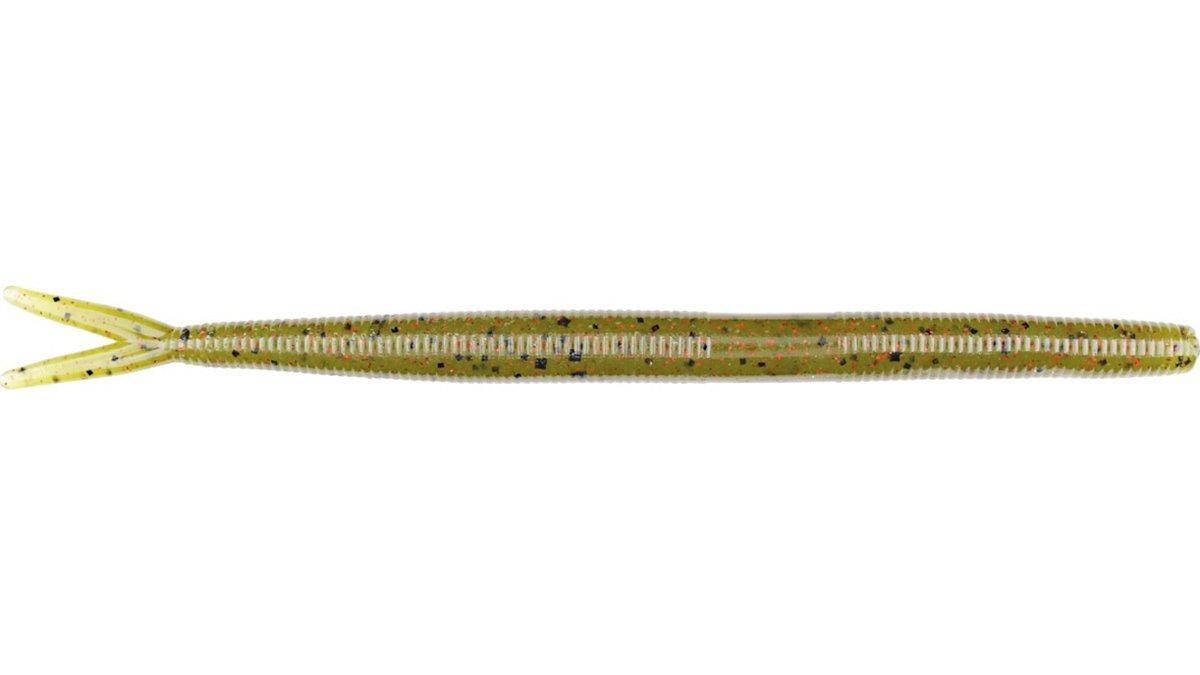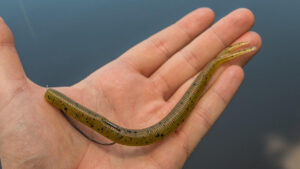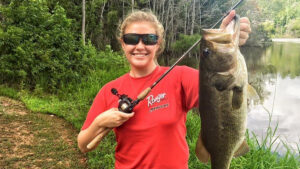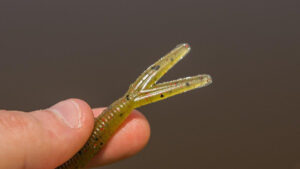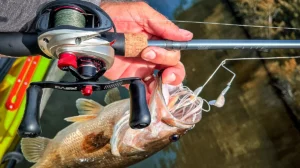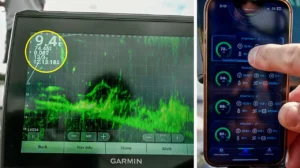Most of us—myself included—carry way too many soft plastics when we’re fishing. A simple bait or color change can quickly turn into lots of wasted time as we sift through dozens of bags. In the past year or two, I’ve gone through steps to simplify my soft plastic collection and stick with what I know works. There’s no sense in loading my boat down with shapes and colors I’ll never use.
The Zoom Fluke Stick is one of the baits that has helped me narrow down my collection. It combines two of the most popular bass fishing profiles—a stick worm and a soft jerkbait—into one. I’ve been using it for over a year with consistent results whether I’m fishing on large reservoirs or small ponds.
Versatile
In my opinion, the Zoom Fluke Stick is tailor-made for a shallow-water junk fisherman. If you like to probe skinny water searching for bass in and around thick cover, you’ll quickly take a liking to this bait. The forked tail of the Fluke Stick adds an impressive amount of action to the bait when fished both weightless and on a Texas rig.
When faced with clear water conditions, I’ve enjoyed a lot of success fishing the Natural Shad and Watermelon Red Fluke Stick on a weightless 3/0 EWG worm hook. I fish it exactly like I fish a Zoom Fluke with sharp, downward twitches of my rod tip. The Fluke Stick darts and dashes from side to side and as it falls horizontally on slack line, you’ll notice a fairly pronounced shimmy to the bait. I believe this has a lot to do with the bites I’ve been getting, as the large majority of them have occured on the fall.
In stained to dirty water, I’ve been fishing the Fluke Stick on both a Texas rig and shaky head. With subtle twitches of the rod tip, the forked tail waves back and forth and closely imitates both a feeding and dying shad. I’ve caught a lot of fish simply dragging it down bare banks, but I’ve also been super impressed by its ability to produce in thick brush piles when the bite is tough.
For those who like to fish a wacky rig, this is an excellent bait choice for the application. I’ve actually been pinching off its forked tail and creating a more traditional stick worm. Its plenty soft enough to allow for a nice, parabolic bend when twitched and it has a slow sinking action that suspended bass have a hard time ignoring. I’ve had most of my success using this technique around vertical cover such as dock posts and stumps.
Extremely easy to cast
The Fluke Stick is absolutely loaded with salt—probably more so than most of the stick-style worms I’ve tested. As a result, it’s a lot heavier than you might think.
This has allowed me to make effortless casts to really tough-to-reach areas. The forked tail doesn’t create much, if any, drag, so you’re able to skip this bait like a river rock when fishing docks and thick laydowns.
This has also proven to be an effective bait for dissecting expansive shallow-water flats. On cloudy days when bass tend to roam a bit more, I’ve been able to bomb a weightless Fluke Stick and methodically cover large areas. I’ll start by twitching it quickly but if bites are hard to come by, I’ll slow it down and fish it like a regular Texas rig.
The colors you need
A lot of soft plastic companies will try to set themselves apart from the crowd by offering crazy-looking colors to consumers. Some of them work, but me? I’d rather stick with colors that have proven their worth for decades.
I’m really digging the available color options of the Zoom Fluke Stick. Nothing outlandish; just natural, good-looking colors that catch fish.
In my experience, I’ve found a few colors to be most effective with this bait: Watermelon Red, Junebug and Natural Shad. The other colors look great, but these colors will, without a doubt, catch a bunch of fish for you.
Final impressions
This is an incredibly simple, yet effective bait that has bailed me out of some super-tough fishing situations over the last year. If you’re around bass, you should be able to catch ‘em with the Fluke Stick.
The Zoom Fluke Stick is available at TackleWarehouse.com.


